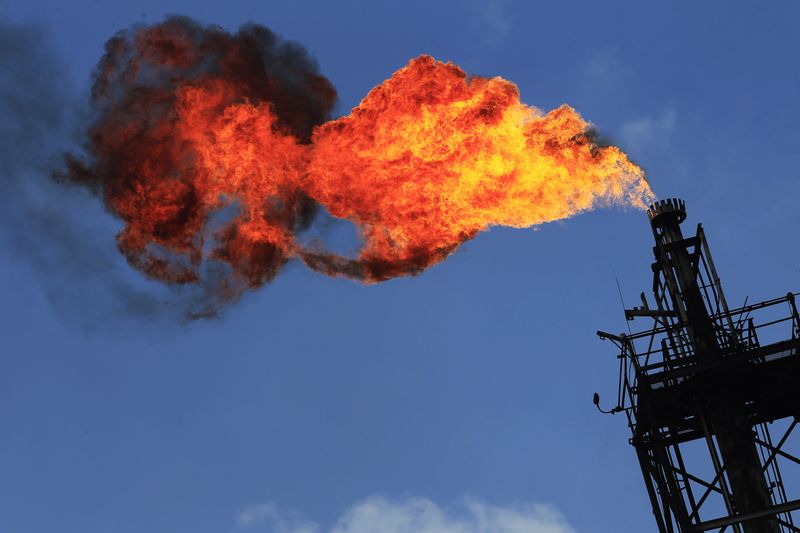By Barani Krishnan
Investing.com -- In markets’ antithesis to Newton’s Law, what goes down must come up. Natural gas futures are doing just that, rising 23% on the week to return to the critical $3 pricing after a 2-½-month long selloff that took the market to $1 territory.
The most-active April gas contract on the New York Mercantile Exchange’s Henry Hub settled at $3.0090 per mmBtu, or metric million British thermal units, up 24.4 cents, or 9% on the day. For the week, it rose 55.8 cents.
It was also the first time since Jan. 24 that a front-month contract on the Henry Hub settled above the $3 mark, after gas futures lost the $2 perch amid intense selling sparked by an abnormally warm winter.
The rebound in gas prices comes on the back of late winter chills expected across the United States, which has less than three weeks left before the official start of spring.
“Weather forecasts shifted cooler from yesterday with the middle of March forecast expected to be around 10 degrees cooler than the 10-year normal,” Houston-based energy markets advisory Gelber & Associates said in a note on natural gas issued Friday.
“The week ending March 17th is expected to be the coolest since early February,” the note added.
Technically, April gas’ next major upside target would be $3.55, said Sunil Kumar Dixit, chief technical strategist at SKCharting.com.
“If the current momentum gains enough trigger, we can expect further upside towards $3.18, followed by $3.31 and $3.55, over an extended period of time,” said Dixit.
Some have also warned, however, that the market should brace itself for volatility as there was still too much gas supply in storage to warrant any concerns of squeeze from demand to sustain a long-running price outbreak.
Storage of natural gas stood at a total 2.114 tcf, or trillion cubic feet, as of Feb. 24 — up 27% from the year-ago level of 1.66 tcf and 19% higher than the five-year average of 1.77 tcf, the EIA, or Energy Information Administration, reported.
An unusually warm winter has led to considerably less heating demand in the United States this year, leaving more gas in storage than initially thought.
Responding to the warmth and lackluster storage draws, gas prices plunged from a 14-year high of $10 per mmBtu in August, reaching $7 in December before hitting a 2-½ year bottom of $1.967 last week.
Since then, the market has rebounded on an anticipated rise in U.S. heating demand over the next two weeks from colder-than-normal weather conditions.
Daily production of gas has also fallen to 97.5 bcf, or billion cubic feet per, from highs of over 100 bcf per day.
Another upside for gas bulls has been the improving feed demand for liquefied natural gas with a steady pickup in volumes going into the Freeport LNG terminal in Texas, which has been slowly getting back to normal operations after a fire in June. Freeport had been a rock-solid base of 2 bcf of gas demand a day until it was knocked out.
